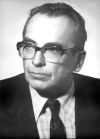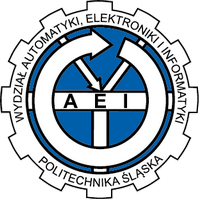Start - Henryk-Kowalowski
Prof. Henryk Kowalowski

Youthful years in Cracow
Henryk Kowalowski was born on 24 August 1925 in Cracow, in the family of the Silesian Uprisings participant, an officer of the Polish Army in active service. After finishing elementary school, he attended Jan III Sobieski Gymnasium. After the outbreak of the Second World War, he continued his education in the secret teaching mode and finished the gymnasium in 1941. For a long time, the war separated him from his father, who participated in defensive fights and was imprisoned in the USSR, which he then left after joining General Anders's army. Henryk’s father returned to Poland from England in 1946 and retired with the rank of lieutenant colonel. In the meantime, in June 1943, Henryk Kowalowski graduated from the State School of Mechanical Engineering and Electrical Engineering in Cracow (then under German occupation), receiving a diploma of mechanical engineering technician, which was verified at the same, already Polish school, in February 1945. After graduating, he worked in Cracow at an automobile tire factory, the Brown-Boveri company, and the Silesian-Opole Operations Group of the Ministry of Industry.
The first years in Gliwice
In July 1945, Henryk Kowalowski arrived in Gliwice with the intention of studying at the nascent Silesian University of Technology. With the enthusiasm of the generation that managed to survive the nightmare of war, as a candidate for a future student, he helped with the furnishing of lecture halls together with his colleagues. The work consisted of removing rubble, glazing windows, and cleaning the grounds and lecture halls in buildings given to the university by the liquidated military hospitals. In May 1951, he graduated from the Silesian University of Technology, Faculty of Electrical Engineering, with a very good grade. While still a student, he started his scientific and didactic work under the supervision of Professor Władysław Kołek as a junior assistant in the Department of Electrical Machines. He was an active member of the Polish Socialist Party (PPS), Polish United Workers' Party (PZPR), Students' Union "Bratnia Pomoc" (Brotherly Help), and Union of Polish Nationalities (ZNP).
Next, he was sent for further studies to the USSR, and from 1952 to 1955, he studied in the Department of Electrical Machines at Moscow Power Institute (MEI). Here, he received the degree of candidate of technical sciences, equivalent to the Polish academic degree of doctor. After returning to Poland in April 1956, he was appointed assistant professor in the Department of Electrical Machines at the Silesian University of Technology in Gliwice. He lectured on the subjects of "Design of Electrical Machines" (for the specialty of Electrical Machine Design) and "Electrical Micro Machines" (for the specialty of Automatics and Telemechanics). He initiated the first research work at the Department in the field of electrical micromachines. He was a co-author of the project of the two-phase asynchronous executive motor with a canned rotor, which was implemented by the business customer in the form of the first prototype series in Poland. He became the first secretary of the Academic Committee of the Polish United Workers' Party (PZPR) at the Silesian University of Technology.
The beginnings of the Faculty of Automation
Since January 1962, Henryk Kowalowski participated in the work of the Division of Automation, created by a group of professors and associate professors (Adam Macura, Edmund Romer, Jerzy Siwiński, Zdzisław Trybalski, Stefan Węgrzyn, Tadeusz Zagajewski) of the Faculty of Electrical Engineering at the Silesian University of Technology. This team, which had earlier led to the undertaking of research and the education of students in the field of Automatic Control at the Faculty of Electrical Engineering in 1962, under the direction of prof. Tadeusz Zagajewski, developed organizational principles and plans of study for a new, independent Faculty of Automatic Control. This initiative, innovative on a national scale, did not meet with enthusiasm in the governing centers of power. In view of the prolonged waiting for the relevant decision of the Ministry of Higher Education, Henryk Kowalowski attempted to intervene. On 10 September 1963, as a representative of "a group of party scientists of the Faculty of Electrical Engineering", he signed a letter to the First Secretary of the KW PZPR in Katowice, Edward Gierek. This intervention was probably effective in the reality of that time because, on 30 December 1963, the Faculty of Automatic Control of the Silesian University of Technology was established by order of the Minister of Higher Education. One of the seven departments of the new Faculty, namely the Department of Automatic Control Construction, was headed by Assistant Professor Henryk Kowalowski. Formally, this position would remain vacant for two more years; the scientific supervision of the Department was assumed by the Head of the Department of Industrial Measuring, docent Edmund Romer.
Organizational, teaching, and scientific work
As the actual, and since 1966 also formal, Head of the Department of Automation Devices Construction, docent Henryk Kowalowski had been organizing a research and development team whose task was to carry out teaching and research activities in the field of designing, constructing, manufacturing, and testing of automatic control engineering elements and devices, particularly electromechanical and magnetic ones. Since 1964, he had lectured in the courses "Electromagnetic Elements of Automatics" and "Electric Machines and Propulsion." He directed the work in the successively launched Laboratory of Electromagnetic Elements of Automatics. He was the co-author and editor of a two-part university script “Laboratorium elektromechanicznych i magnetycznych elementów automatyki” (Laboratory of Electromechanical and Magnetic Elements of Automatics, 1976), and the author of a two-part script “Maszyny i napęd elektryczny” (Electrical Machines and Propulsion, PWN 1969, four editions in 1969-74). He acquired and conducted scientific and research work for industry. His own scientific interests focused on the problems of controlled asynchronous linear motors. At that time, as the vice-chairman of the Company Council for Social and Living Matters of the Polish Academy of Sciences, he organized a holiday resort for the Silesian University of Technology in Jastrzębia Góra in 1965.
As of 01 October 1968, the Ministry of Higher Education appointed him Dean of the Faculty of Automatic Control of the Silesian University of Technology, a position he held until 1973. During his tenure as Dean, Prof. Kowalowski put a lot of effort into organizing the construction of a new Faculty building at 16 Katowicka Street, which was put into use in the summer of 1973.
In the years 1969-1971, he worked as the Head of the Department of Automation Devices Technology, which was established after the reorganization of the University. In 1971, he was awarded the academic title of Associate Professor by the resolution of the State Council. From 1971 to 1974, he was the head of the Institute of Construction and Technology of Automatic Control Devices and Electronics, and then, the head of the Institute of Construction and Technology of Automatic Control Devices and Computer Science of the Silesian University of Technology. He continued to organize scientific and research cooperation with industry. He was an automation consultant at "Zawiercie" Steel Plant (1969-74). In the years 1971-75, he was the head of a research team implementing two research tasks from the nodal problem 06.1.2. Worth mentioning is a device for extracorporeal blood dialysis (artificial kidney), which, among other works, was designed by Henryk Kowalowski, Aleksander Kwieciński, and others. In March 1976 the device was put into operation in the Nephrology Clinic of the Silesian Medical Academy.
In 1977, Prof. Henryk Kowalowski became the head of the Institute of Automatic Control, which was created after the reorganization of the Faculty of Automatic Control and Computer Science. The years 1977-80 were characterized by the evolution of his research interests: from automation of design and construction works to automation and robotics of discrete industrial processes. In 1976-81, under the supervision of Prof. Henryk Kowalowski, a series of papers on the scheduling of selected discrete technological processes, also with the use of industrial robots, was prepared in the Institute of Automatic Control for the Bielsko-Biała Small-Size Car Factory. The SILMOT assembly line dispatching control system was then implemented.
Professor Henryk Kowalowski initiated and organized the National Conference on Automation of Discrete Industrial Processes (Krajowa Konferencja Automatyzacji Procesów Dyskretnych), which was held for the first time in Kozubnik near Bielsko in October 1978. At that time, Professor Kowalowski co-authored a new curriculum for the specialization of Automatics in the Faculty of Automatic Control and Computer Science, which came into effect on 1 October 1978. He then lectured in the courses "Automation of discrete industrial processes" and "Robotronics".
When in October 1980, the "Solidarity" Trade Union was organized at the Silesian University of Technology and the Faculty of Automatic Control and Computer Science, Prof. Henryk Kowalowski did not share the enthusiasm of his surroundings and did not join the Union. At that time, he worked on his monograph “Automatyzacja dyskretnych procesów przemysłowych” (Automation of Discrete Industrial Processes), of which he was a co-author and editor; the book was published in November 1984. Since October 1984, he had been working as the head of the Department of Robotics and Automation of Discrete Processes. At that time, he was awarded the title of Full Professor by the resolution of the State Council of 11 April 1986. In 1987, he began teaching a new course in Automation and Robotics at the Faculty of Automatic Control, Electronics, and Computer Science of the Silesian University of Technology. He co-created a new curriculum for this faculty. He lectured in the courses "Introduction to Automation and Robotics", "Robotics fundamentals", "Artificial intelligence of robots", and "Flexible manufacturing systems". He organized and equipped a teaching laboratory with industrial robots for students of the new course.
In 1995 Prof. Henryk Kowalowski celebrated a double jubilee - his 70th birthday and the 50th anniversary of his studies and work at the Silesian Technical University. That year, the Institute of Automatic Control organized a Scientific Seminar devoted to the Professor's 50th anniversary of his scientific work. In the same year, obedient to the Act on Higher Education, Professor retired. He devoted himself to taking care of his ailing wife. He maintained contact with his colleagues, and in June 2004, he still took part in the celebrations of the 40th anniversary of the Faculty of Automatic Control, Electronics, and Computer Science. He died on February 10, 2005, after a serious illness.









